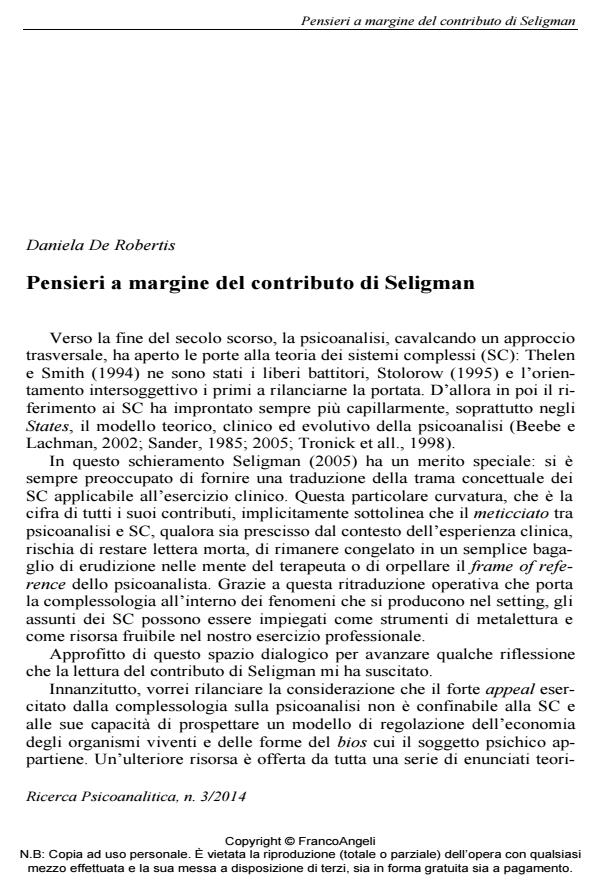A few reflections on seligman’s paper
Journal title RICERCA PSICOANALITICA
Author/s Daniela De Robertis
Publishing Year 2014 Issue 2014/3
Language Italian Pages 8 P. 47-54 File size 55 KB
DOI 10.3280/RPR2014-003005
DOI is like a bar code for intellectual property: to have more infomation
click here
Below, you can see the article first page
If you want to buy this article in PDF format, you can do it, following the instructions to buy download credits

FrancoAngeli is member of Publishers International Linking Association, Inc (PILA), a not-for-profit association which run the CrossRef service enabling links to and from online scholarly content.
Within the theory of complex systems and the science of complexity the Author criticizes the or/or positions and suggests a mental approach based on the and/and position based on non-duality. The therapeutic situation with the events taking place in it is considered as a macrosystem where the reactions produced by each partner, that is the behavior of each sub-system, are the function of a reorganization and adjustment to the stimuli received from the other sub-system. In closing the Author states that the description of the differences between complex and simple systems leads to a view of the therapeutic process as a gradual return of the patient from a simple to a complex system.
Keywords: Science of complexity, reductionism, non-duality, slopiness, saturated interventions, lateral interventions
Daniela De Robertis, Pensieri a margine del contributo di Seligman in "RICERCA PSICOANALITICA" 3/2014, pp 47-54, DOI: 10.3280/RPR2014-003005